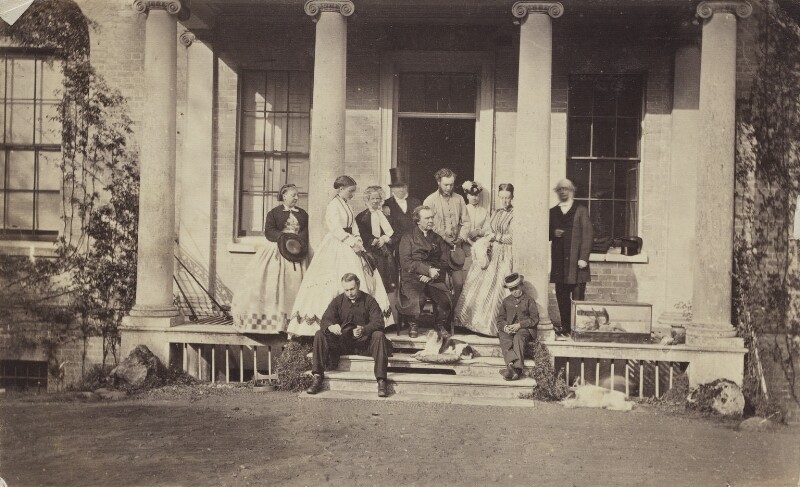
Samuel Wilberforce and family
at Lavington September 1865
© National Portrait Gallery NPGAX9765
used under CC BY-NC-ND 3.0
|
We know that Botany Bay with its 'Fern Walk' was a popular place to go for the owners of Lavington Park in the 1800s. Samuel Wilberforce (son of William
the anti-slave trade campaigner) was married to Emily Sargent in 1828 and lived here with his family.
The following is written in “Lavington; The History of a Sussex Family” by A.M. Wilberforce, published in 1919.
The walks about Lavington were endless; down to Dominies Wood to hear the nightingales, to the Tumbling Bay at Maine, through "Botany Bay", full of rare ferns, to the Common, to Pot Brook to lunch with the shooters, and the shortest to the trout ponds to catch a fish”.
Captain Cook named the site of his landfall in Australia as Botany Bay because of the wealth of plants that he found there.
Subsequently, landowners in England wanting to impress neighbours designated exotic parts of their own estates as 'Botany Bay'. |